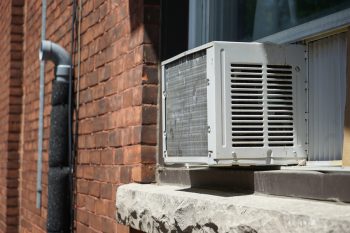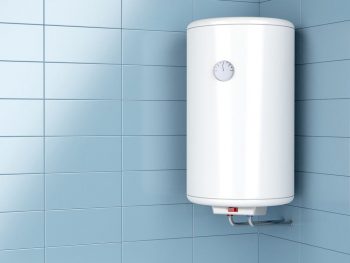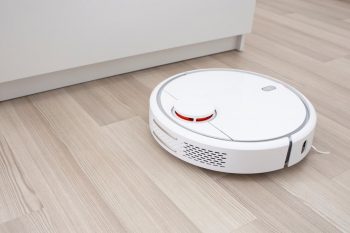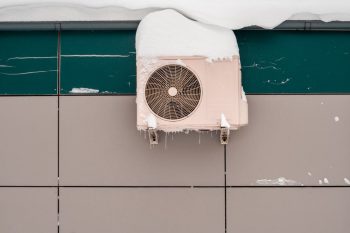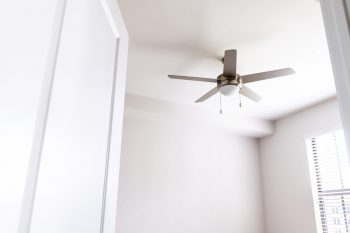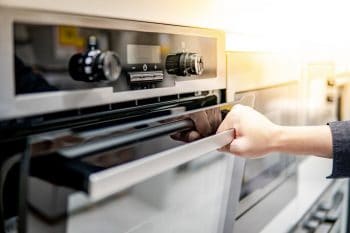
Starting a gas oven can seem like a daunting task, especially if you’re new to using gas appliances. However, with the right knowledge and precautions, it can be a simple and safe process. In this in-depth guide, we’ll walk you through the steps on how to start a gas oven, as well as how to maintain it for optimal performance and safety.
Starting a gas oven involves a few simple steps. First, ensure all safety measures are in place and there are no gas leaks. Open the oven door and locate the pilot light hole. Push in and hold the oven knob while turning it to the “ignite” setting or the first temperature setting. If your oven doesn’t have an igniter switch, use a long match or lighter to ignite the pilot light. Hold the oven knob for up to 10 seconds to ensure the pilot light stays lit. Once the pilot light is lit, close the oven door and adjust the temperature as needed for your cooking.
Safety Precautions Before Starting a Gas Oven
Before we dive into the steps of starting a gas oven, it’s crucial to understand the safety precautions you need to take.
- Check the gas line for leaks: Inspect the gas line connections, fittings, and hoses for any cracks, damage, or signs of wear. If you suspect a leak or detect a smell, switch off the gas supply, open windows for ventilation, and seek professional help.
- Use the right cookware: Choose utensils with a bottom that covers the flame when turned to high, ensuring the fire does not escape from the bottom to the sides of the appliances.
- Don’t let the burner run without ignition: Make sure the burner is ignited before turning on the gas to avoid gas leakage.
- Keep flammable materials away: Keep oven gloves, tea towels, and other flammable materials away from the stove and oven. Be cautious with loose clothing and kitchen curtains.
- Install carbon monoxide detectors: Place detectors low near the floors, as gas leaks are heavier than air. If the alarms sound off, immediately open all windows and doors, go outside for fresh air, and call emergency medical help.
- Never leave the oven unattended: Always stay in the kitchen when cooking and turn off the oven if you need to leave for a short period.
- Install a fire extinguisher: Keep a fire extinguisher in or close to the kitchen and ensure you know how to use it.
- Ventilate the kitchen: Open all windows and doors in your kitchen for proper ventilation, especially if you’ve been trying to light the oven for a while and turning the knobs on and off.
By following these safety precautions, you can minimize the risks associated with using a gas oven and ensure a safe cooking environment.
Understanding Your Gas Oven Components
Before you start your gas oven, it’s important to familiarize yourself with its various components:
- Control panel: Allows you to set the oven temperature and cooking mode.
- Knobs: Used to control the temperature of the oven and the level of flame on the stovetop.
- Oven: The main cooking cavity where you bake, roast, or broil food.
- Oven door: Provides access to the oven cavity and helps retain heat inside.
- Oven racks: Metal shelves inside the oven that can be adjusted to different heights.
- Burners: Gas burners on the stovetop, usually topped with cast-iron grates.
- Burner caps: Removable covers that protect the burners from spillage.
- Removable grates: Cast-iron grates that support pots and pans on the stovetop.
- Oven vent: Allows heat and moisture to escape from the oven.
- Warming drawers: Additional compartments below the oven for keeping food warm.
- Gas oven igniter: Ignites the oven’s heating burner, typically located inside the oven near the burner tube at the back.
- Thermostat: Regulates the heat inside the oven to maintain consistent temperatures.
- Safety valve: Ensures that gas flows only when the igniter is functioning correctly.
- Burner assembly: Includes the burners, burner caps, and removable grates on the stovetop.
- Pilot light or spark igniter: Ignites the gas burners on the stovetop and inside the oven.
Understanding these components will help you operate your gas oven safely and efficiently.
The Process to Start a Gas Oven
Starting a gas oven involves a few simple steps:
- Ensure safety: Turn off the oven and make sure all the stove burners are off. Check for any smell of gas or hissing sounds, indicating a gas leak. If you detect a gas leak, ventilate the kitchen and do not proceed with lighting the oven.
- Open the oven door: Locate the pilot light hole by opening the oven door all the way and ensuring it is locked into place.
- Ignite the pilot light: Push in and hold the oven knob while turning it to the “ignite” setting or the first temperature setting. Keep holding the knob until the pilot light is lit.
- Light the pilot light: If your oven doesn’t have an igniter switch, use a long match or lighter to ignite the pilot light. Hold the match or lighter near the pilot light hole while keeping the oven knob pressed in.
- Hold the oven knob: Keep holding the oven knob for up to 10 seconds to ensure the pilot light stays lit.
- Close the oven door and set the temperature: Once the pilot light is lit, close the oven door and adjust the temperature as needed for your cooking.
Remember to follow safety precautions while using a gas oven, such as keeping the kitchen well-ventilated, using a range hood, and keeping vent holes clear. If you have trouble lighting your gas oven, it may be best to call a professional to inspect the pilot light and ensure proper functioning.
Troubleshooting Common Gas Oven Issues
If your gas oven fails to start, here are some troubleshooting tips:
- Check the circuit breaker: Ensure that the electrical circuit supplying power to the oven has not tripped a circuit breaker. Gas ovens require electrical power to operate timers and other components.
- Check the gas supply: Make sure the main gas valve is turned on and all other gas supply valves are open. If the gas supply was recently repaired or replaced, ensure the gas valve on the supply pipe has been turned back on.
- Check the igniter: Remove the oven racks and the large metal plate at the bottom of the oven to expose the gas burner and igniter. Inspect the igniter for discoloration or damage.
- Clean the burner: If the igniter seems to be working, the problem might be that the gas elements or burners are blocked. Lift off the burner grate, burner cap, and burner base, then clean any food debris out of the burner with a toothpick or compressed air.
- Check for loose connections: Ensure that the wires and tubes connected to the ignition parts of your gas oven are not loose or disconnected.
- Test the oven safety valve: The safety valve is often misdiagnosed as the most common problem for a gas oven that doesn’t heat. The oven igniter is most often the cause of the problem. Use a multimeter to test the safety valve for continuity.
- Replace the igniter: If the igniter is not glowing or is glowing but the burner has not been lit after 90 seconds, there is a high probability that the igniter has weakened and needs to be replaced.
If you have tried all these steps and the oven still does not start, it is recommended to call a professional technician to diagnose and repair the issue.
Regular Maintenance for a Gas Oven
To ensure your gas oven operates smoothly, it’s important to perform regular maintenance tasks:
- Clean and inspect burners regularly: Clean both the stovetop burners and the oven burners to ensure efficient heat levels and prevent burning excess fuel. Use a stiff-bristled tube brush to remove debris buildup.
- Inspect the oven door seal: Check the rubber or silicone gasket around the oven door for cracks or deterioration. Replace the seal if you notice any issues.
- Clean the cooling fans: Some gas ovens have cooling fans. Regularly clean these fans to maintain their efficiency.
- Check and replace gaskets: Inspect the gaskets on oven doors, which help seal the oven and trap heat inside. Replace damaged or worn gaskets.
- Lubricate and adjust door chains: Clean and lubricate the tension chain for the oven doors, which is usually located behind the kickplate.
- Clean the oven interior: Use your oven’s self-cleaning feature if available, or clean the interior manually with appropriate cleaning solutions.
- Inspect and replace the gas line: Check the gas line for wear and replace it if necessary.
- Wipe down daily, scrub weekly, and deep clean monthly: Regularly clean the oven’s exterior and interior, including grates and burners, to prevent buildup of grease and dirt.
By performing these maintenance tasks regularly, you can ensure that your gas oven operates safely and efficiently, extending its lifespan and improving its performance.
Tips for Efficient and Safe Usage of a Gas Oven
To ensure efficient and safe usage of a gas oven, follow these tips:
- Rotate your trays: Gas ovens can have hot spots, so rotate your trays to ensure even cooking.
- Use the top racks for browning: Place food on the top racks to achieve a crisp, brown top, as the heat will bounce off the oven’s interior ceiling.
- Avoid dark-colored metal bakeware: Darker colors absorb more heat, which can cause the bottom of your food to burn faster. Instead, opt for glass or silicone cookware.
- Keep the stove clean: Regularly clean your gas stove to prevent debris from catching fire.
- Ventilate your kitchen: Keep windows open or use a range hood to improve air quality and reduce the risk of carbon monoxide poisoning.
- Monitor carbon monoxide levels: Install a carbon monoxide detector to ensure safety.
- Install a fire extinguisher: Keep a fire extinguisher in or near the kitchen in case of emergencies.
- Cook multiple dishes simultaneously: Save energy and time by cooking multiple dishes at the same time.
- Thaw food before cooking: Thawing food first reduces cooking time and energy usage.
- Regularly service your gas stove: Have a professional check your stove for leaks and ensure proper functioning.
- Use proper cookware: Use cookware that is compatible with your gas oven, as recommended in the oven’s manual.
By following these tips, you can optimize the performance of your gas oven while ensuring safety and efficiency.
Conclusion
Starting a gas oven doesn’t have to be intimidating. By understanding your oven’s components, following safety precautions, and performing regular maintenance, you can safely and efficiently use your gas oven. Always remember to consult your oven’s user manual for specific instructions and seek professional help if you encounter any issues. Happy cooking!
Frequently Asked Questions
How often should I clean my gas oven?
It’s recommended to clean your gas oven at least once every three months. However, if you use your oven heavily, you might need to clean it more frequently.
How long do gas ovens typically last?
The lifespan of a gas oven can vary based on usage and maintenance, but generally, they can last between 10 to 20 years. Regular cleaning and maintenance can help extend your oven’s lifespan.
Can I use aluminum foil in a gas oven?
Yes, you can use aluminum foil in a gas oven. However, it’s important not to cover the entire oven rack with foil as it can restrict air flow and lead to uneven cooking. Also, never place foil at the bottom of the oven as it can cause a fire.
What should I do if my gas oven’s pilot light goes out?
If your gas oven’s pilot light goes out, you can relight it by turning the gas off, waiting for any gas to dissipate, then following the instructions provided in the ‘Process to Start a Gas Oven’ section. If you’re unable to relight it, contact a professional.
Do gas ovens heat up faster than electric ovens?
Generally, gas ovens heat up faster than electric ovens. However, electric ovens can provide more even heat distribution.
What should I do if I smell gas in my kitchen?
If you smell gas in your kitchen, immediately turn off all gas appliances and open windows and doors for ventilation. Do not use any electrical appliances or light any flames as they could ignite the gas. Exit the premises and call your gas supplier immediately.
What should I do if my gas oven won’t heat up?
If your gas oven won’t heat up, there could be several causes. It could be due to a faulty igniter, a problem with the gas supply, or a tripped circuit breaker. You can refer to the ‘Troubleshooting Common Gas Oven Issues’ section for more information. If you’re unable to identify or fix the problem, it’s best to call a professional.

